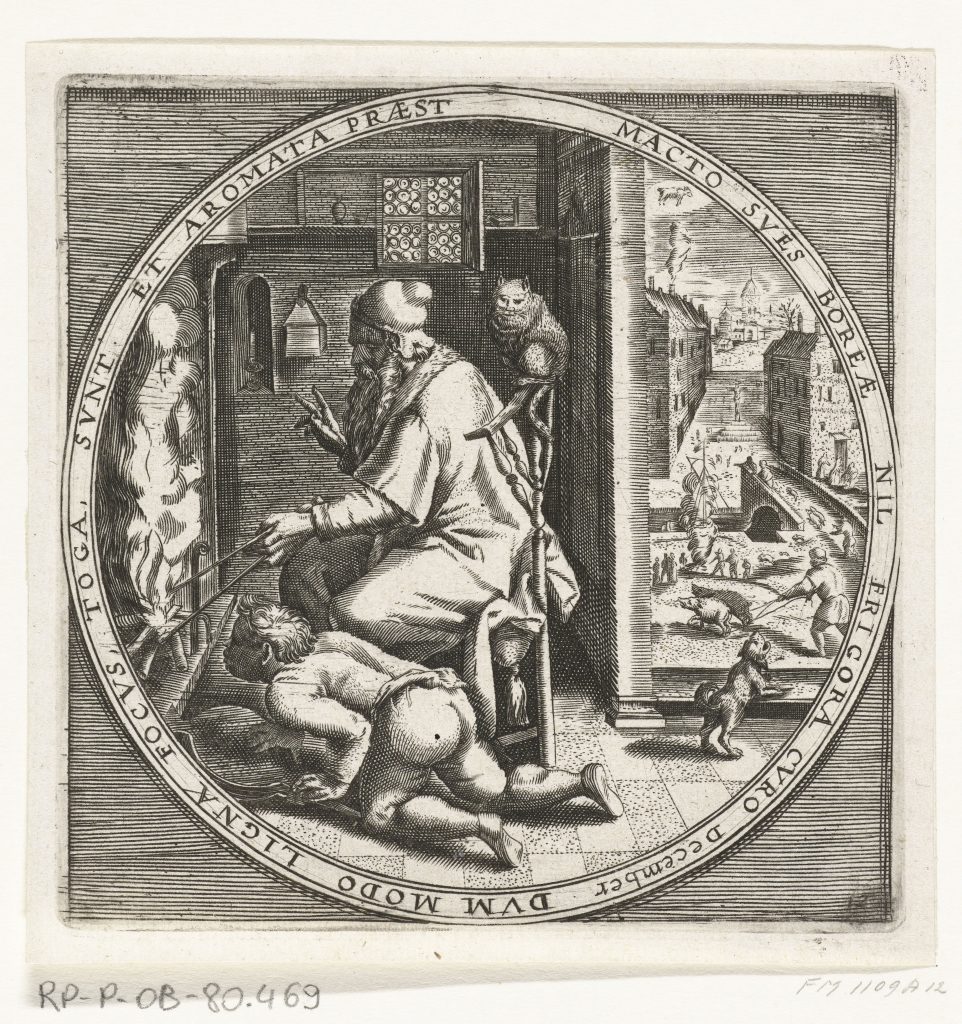
17th Century Almanac for April
The 17th Century almanac for April – the ‘Sweet Month’ and ‘fairest child of Spring’.
17th Century Life and Agricultural Labour
In the 17th Century, April began with All Fools Day on the 1st. The day was first recorded in 1686 as ‘Fooles Holy Day’. However, it was almost certainly an older practice. One report from 1698 tells us that “yesterday being the first of April, several persons were sent to the Tower Ditch to see the lions washed”.
Apparently, this was a popular prank, played on gullible visitors to London, well into the 19th century. Of course, the animals at the Tower of London had no such annual bath. Either way, All Fools Day must have been a time of joyous relief for those that had made it through winter months of cold, Lenten hunger and sickness.
More serious was the April work on the croft and in the fields. With spring came the birthing of piglets and the start of milking sheep on the croft or farm. Dairy work would go on until St Andrew’s Day (30th November). Timber was felled, carted and stacked for ships and building work. Finally, April brough the arrival of the cuckoo and swallows.
The opportunity for agricultural enterprise allowed some to ‘engross’ their holdings, taking over the tenancy of additional acre strips, or enclosed fields, from those less successful. This created a surprising degree of social mobility, with families rising or falling within the village hierarchy.
Early Modern Social Hierarchy
17th Century village hierarchy consisted of gentlemen, yeomen (employing others on their land), husbandmen (working their own holding), cottagers (less than four acres and needing to supplement with waged work), labourers (landless) and the poor – both ‘deserving’ of support and ‘idle poor’ – (reliant on charity). Least fortunate of all were those who were vagrant, who held no place within a parish and received no Poor Law support from it.
Until the Reform Act of 1832, the franchise to cast a vote to select a Member of Parliament was restricted to those who owned freehold land worth forty shillings or more. In practice, only the gentry, merchants and richest yeomen achieved this. The vast majority were without direct representation in government.
Easter, St George and the Milk Moon
This year, Maundy Thursday – when the king washed the feat of the poor – was marked on the 28th of March. Tomorrow will be Easter Sunday, the first Sunday after the first full moon after the Equinox. This was an Elizabethan holy day when all attended church. Thomas Tusser tells us that it was also a day when all good husbandmen should feast on veal and bacon.
The new Milk Moon will rise on the 8th of April. With the siting of that new moon, the Islamic world will celebrate Eid al-Fitr and the end of the ‘holy month’ of Ramadan on Tuesday the 9th or Wednesday the 10th. It is perhaps striking that these key dates in the Christian and Islamic calendars are set by the moon.
April the 13th will see the Sikh holy day of Vaisakhi, or Khalsa Day, when Punjabi farmers celebrate their two annual crops of rice and wheat harvested from the same fields. April the 23rd is the feast of St George, patron saint of England and of all farmers. Last but not least, the 25th of April was the Feast of St Mark the Evangelist, also an Elizabethan holy day. Today, it is also ANZAC Day, a very moving, early morning act of remembrance.
Whether you feast on veal and bacon, lamb and couscous, or dal, roti and rice, I hope that each day of this sweet month brings you joy for ‘the fairest child of Spring’.
Follow & Read More
I will post more of the 17th Century Almanac and yearly activity in Early Modern Britain, next month. If you would like to receive an email notification of the next post, please click the button to follow.
In the meantime, this website includes more posts and articles about life in 17th Century Britain, Europe and the Americas at Historical Notes and Maps. These include notes and pages on the impact of the Little Ice Age and The General Crisis of the 17th Century. They include articles on the English Revolution and Great Rebellion. They also include Pike and Shot Warfare and battles of the English Civil War.
You can also find more posts on Early Modern history, Living History and re-enactment at News & Events. You may also wish to read about the English Civil War history talks and battlefield walks I give.
See More & Share
Alternatively, check out Facebook, Instagram, Twitter or YouTube for more posts. These include notes from my historical research, Living History and English Civil War fiction. They also include upcoming events and opportunities to meet. Or, follow on social media at #DividedKingdomBooks or #EnglishCivilWarFiction on:
If you want even more, join us in the Divided Kingdom Readers’ Club. Clubmen receive FREE access to exclusive short stories, email and more. Click the link to sign up and join us.
Spread the Word
If you like what you see, please click, share and spread the word via email or your social media on:





